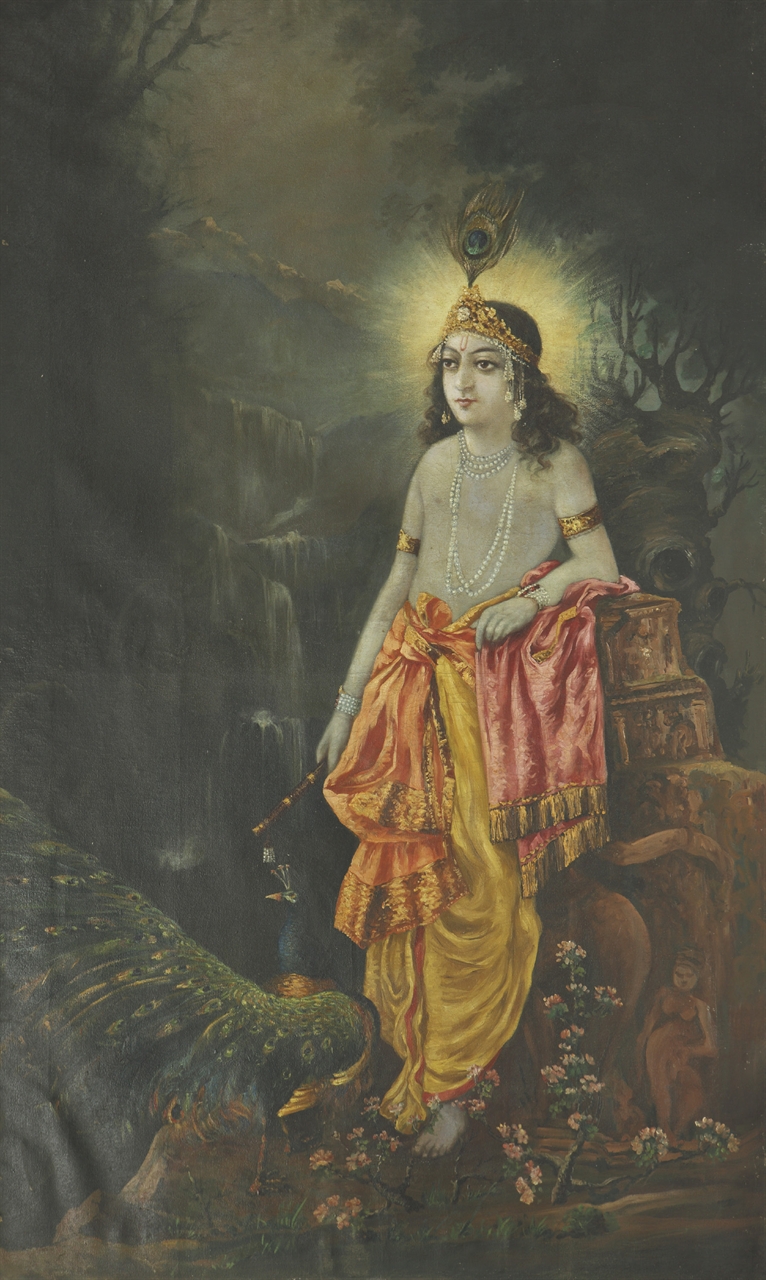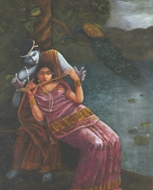![]() Significant Indian Paintings
Significant Indian Paintings
![]() Significant Indian Paintings
USTAD ALLAH BUX (1895 - 1978)
Significant Indian Paintings
USTAD ALLAH BUX (1895 - 1978)
RELATED LOTS
CONTACT US
Catalogue & Viewing
Lot Closed
Accounts & Shipping
Lot Closed
-
Provenance
 Provenance
Provenance
From the collection of a prominent Delhi based family, known to be connoisseurs of art since the 1930s
-
Literature
 Literature
Literature

“I am not a Hindu, nor a Muslim, am I! I am this body, a play of five elements;a drama of the spirit dancing with joy and sorrow” – Kabir
This exquisite oil painting of Lord Krishna though unsigned could be indisputably attributed to Ustad Allah Bux, the great maestro of lyrical realism. Allah Bux is one of the esteemed members of Undivided India who is respected in both the nations of India and Pakistan for his creative oeuvre which he pursued with an unprejudiced mind, responding solely to the insightful yearnings of his inner soul. For him love was a universal language which crossed the narrow by lanes of religion, caste and community in search of truth that unified one’s soul with the eternal. Therefore the love of Radha and Krishna was unanimous to the pining of Heer for Ranjha.
Bux mostly worked in large-scale oil paintings on canvas although he was competent is several other mediums like pen and ink, tempera and watercolours. He was a studio artist who recreated his imagery from the routine observance of the life around him. An admirer of Western Classical Art form, Bux, endlessly endeavored to gain a perfect balance of indigenous traits in the framework of Western pictorial idiom.
The present work exemplifies this conglomeration of diverse cultural lingo. A bejeweled Krishna stands here resting against a broken temple pillar, as is evident from the apsara figure at it’s lower half. The doleful eyes of the teenaged lover eagerly look on for the arrival of his consort. His thirst is intensified by the peacock at his feet who quest for the cherished arrival of Radha. Other than illuminated form of Krishna the rest of the pictorial space is darkened except for the plumed bird, a silently flowing waterfall and the moon-struck mountains in the background. The treatment evokes the European style of chiaro-scuro (light and shade) as seen in the paintings of Caravaggio and Rembrandt. Also worth noticing is the seemingly effortless treatment of fabric and jewellery which bears testament to the artist’s command of Western classical realism.

